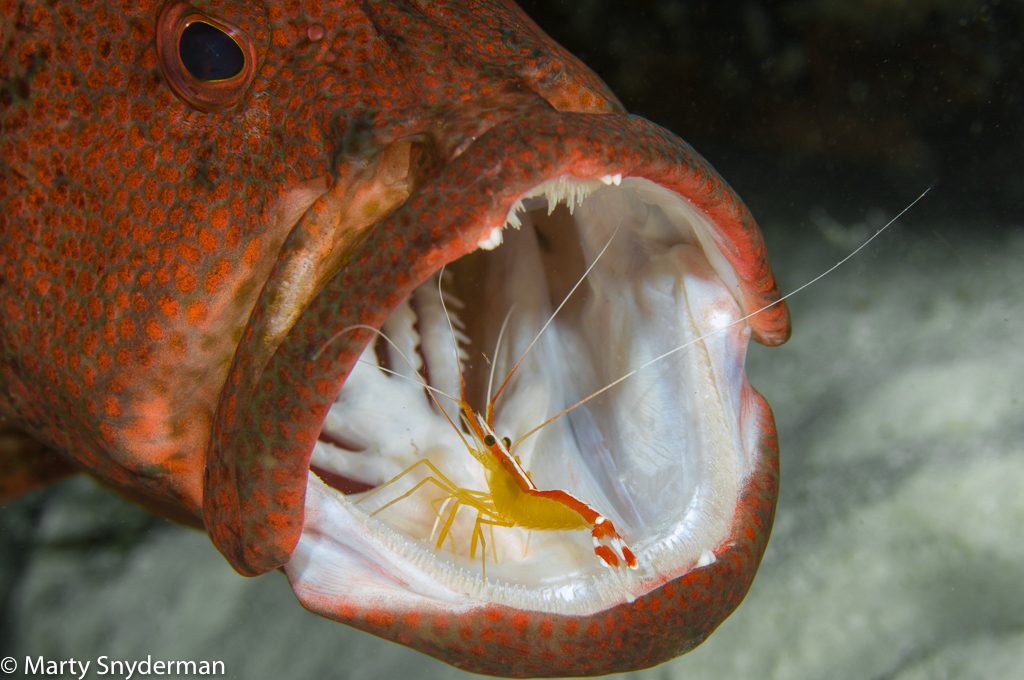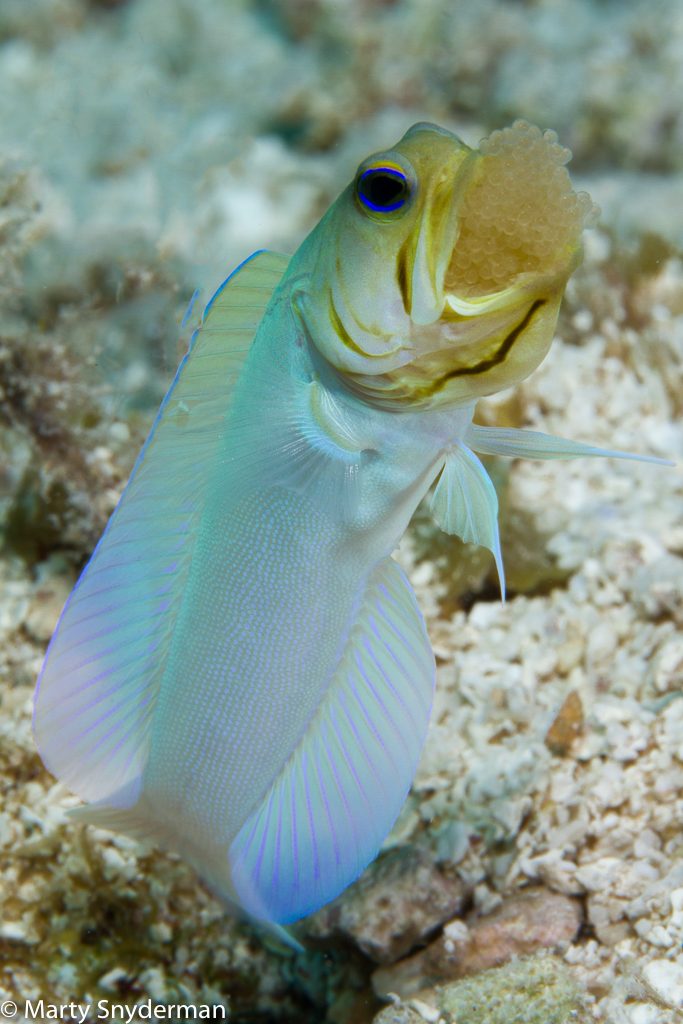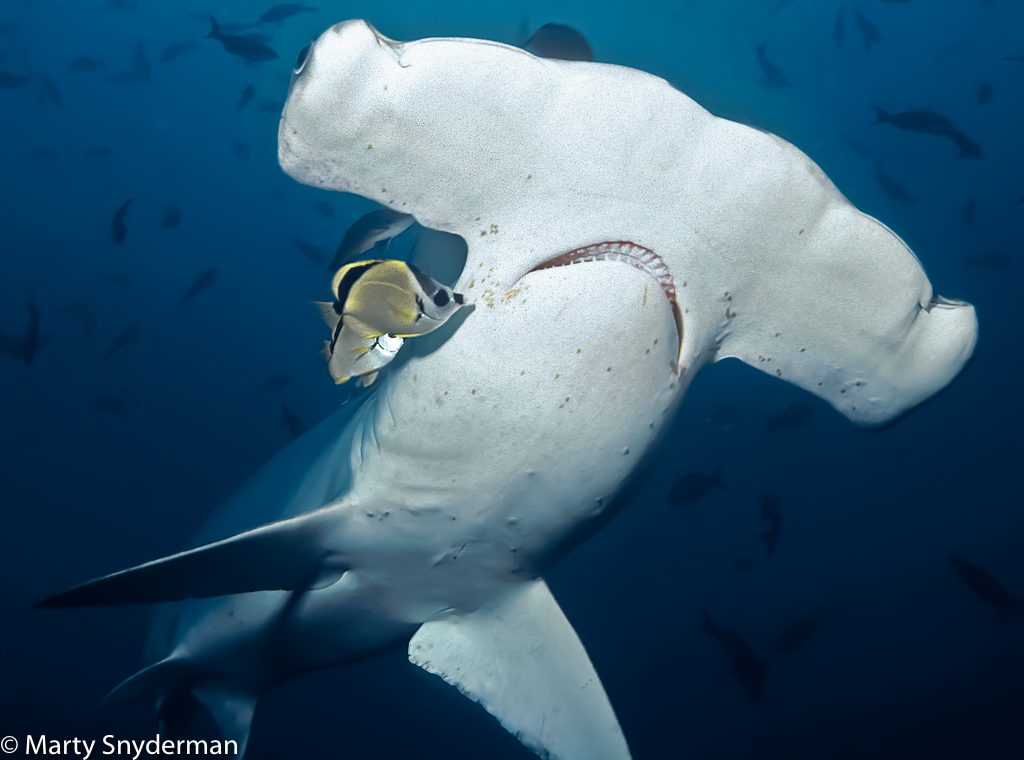Underwater Cleaning Stations and What to Look For
A One-Of-A-Kind, Underwater Partnership
Just like us mere humans, cleaning behavior is vital to the health of many animals and the reef communities they are part of. As a rule, smaller, cleaner species help rid host species of ectoparasites, dead skin, and bacteria and fungi that grow on the skin of the hosts. A variety of shrimps and fish, including many gobies, wrasses, and angelfish, serve as cleaners. Host species include many kinds of bony fish, sharks, rays, turtles, and even dolphins.
Once you discover your first cleaning station, you’ll realize that they’re very common and easy to find on your own, especially in the Grand Cayman, Bonaire, or even on a Philippines liveaboard half-way around the world. These reef communities are easy to find in every destination served by Ultimate Dive Travel.

Scoping Out The Competition
Many fish that live in reef communities enter a sleep-like state known as torpor at night. These fish usually enter the cracks and crevices in the latticework of reefs, or they rest on or near the sea floor. When these host fish are still relatively young and smaller in size, parasites often attach themselves to their bodies. Many parasites take hold near the fins and gills, and some even attach into the mouths of host species.
Every morning, and throughout the day in some cases, the hosts seek out the services provided by the cleaner species. To get cleaned, a host needs to find the cleaners, and the cleaners need to make themselves easy to find as they depend on the hosts to provide their food.
Cleaner species and hosts usually find each other near a prominent physical feature in a reef community such as a specific coral head, rock, sea fan, or cut in the reef. Cleaner shrimps often wave their antennae back and forth in an effort to make their presence known, while cleaner fish either move to a spot that makes them easy to see or swim about in erratic fashion to gain the attention of the hosts.
Host fish also display themselves when requesting service. Some hang in a head-up or head-down position. Others open their mouths extremely wide while hovering. And many blanch their skin to make their parasites easier for cleaners to see. Manta rays and sharks tend to swim very slowly, hover almost motionlessly, or rest on the sea floor when they want to be cleaned.

The Process Of A Priceless Service
The best part of discovering a cleaning station is stopping to watch the fish at work. Cleaners often enter the mouths of hosts when they are providing their service. The first time you see such a behavior it can take you by surprise, but over time you will learn that the cleaners are left unharmed by the hosts, and this behavior is commonplace.
In many instances, hosts compete to get served. If you’re diving near Mexico’s Revillagigedo archipelago, Costa Rica’s Cocos Island, and Ecuador’s Galapagos Islands, you might even see a school of scalloped hammerheads “cut in line” for a cleaning service. When the hosts are cleaned to their satisfaction, they often signal by shaking their head or by changing their body color. But like so many things in the ocean, there is always a risk. Some predatory fish hunt at cleaning stations. They often wait for host species to drop their guard while getting cleaned, and that can be a fatal mistake.
As you might imagine, cleaning stations offer a variety of wonderful opportunities for underwater photographers and videographers, and they are great places to stop, watch, and learn about life in the sea for divers of all experience levels.
We hope that being informed about cleaning stations will help you get the most out of your upcoming scuba travel adventures.

